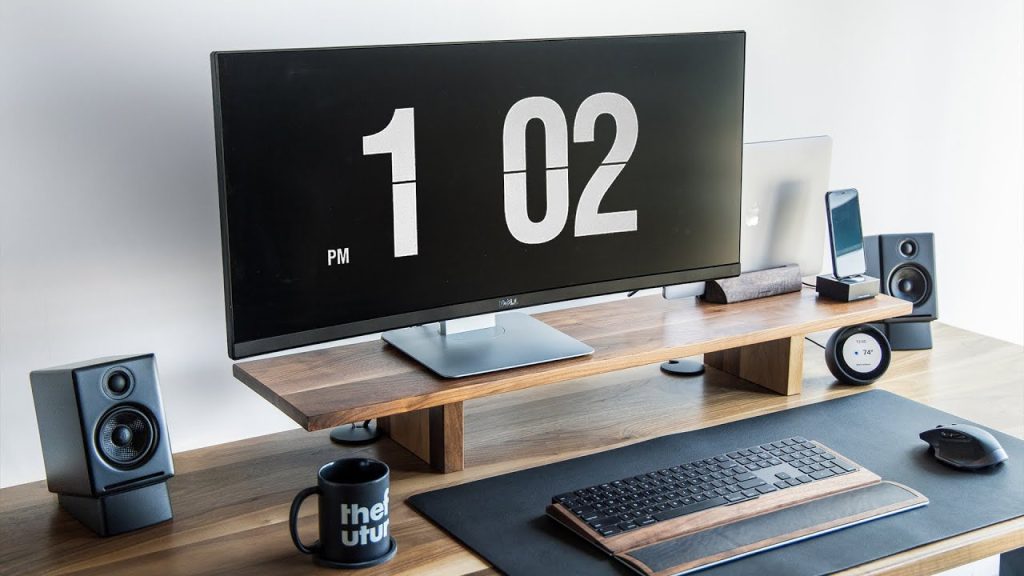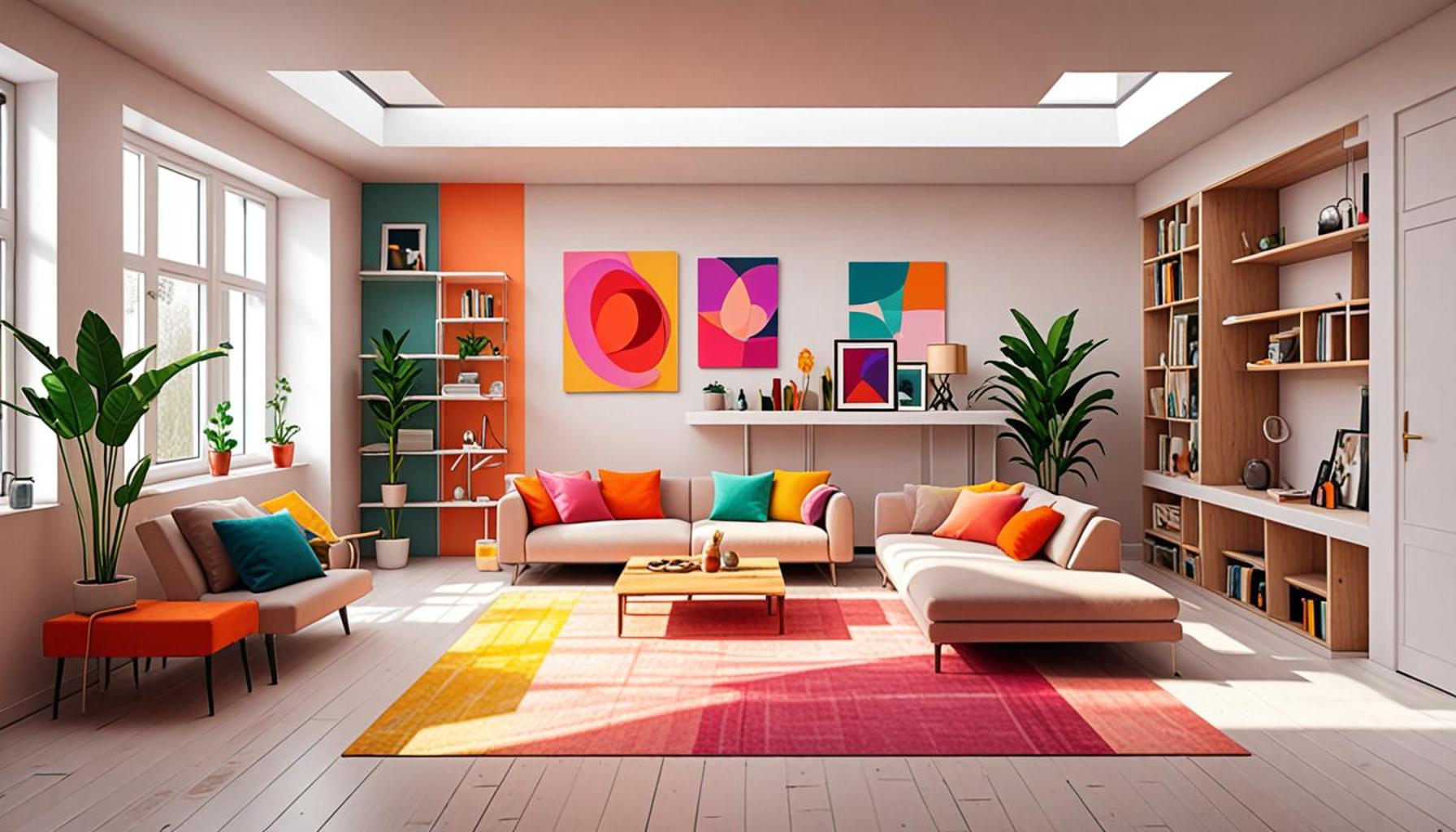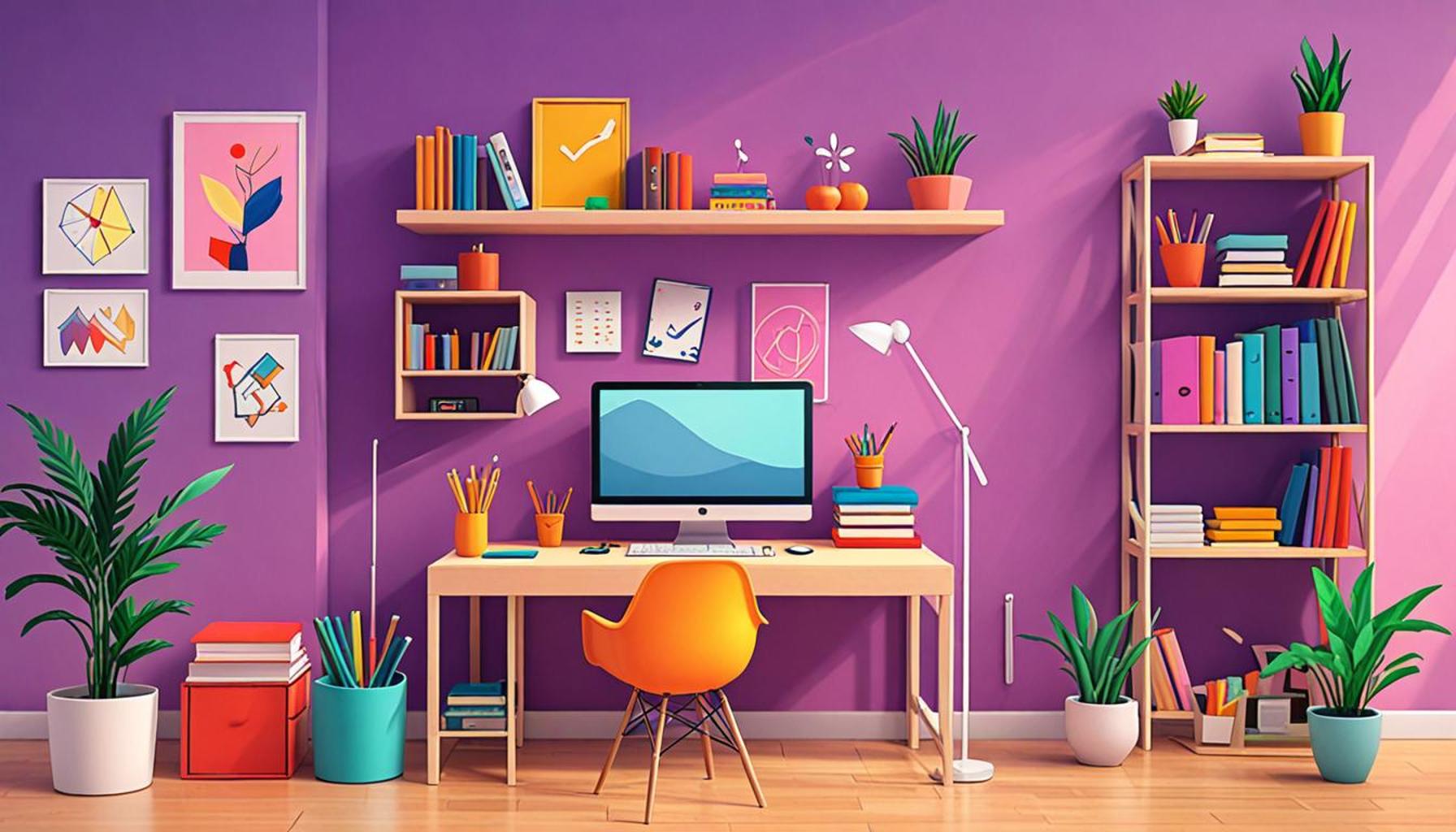Minimalist Workspaces: How to Create an Efficient Home Office with Few Resources

The Rise of Minimalist Workspaces
In an era where the pace of life continues to accelerate, maximizing productivity is paramount. A minimalist workspace emerges as a beacon of tranquility and efficiency, allowing individuals to clear both their physical and mental clutter. By focusing strictly on essential items, this approach fosters an environment conducive to creativity and concentration. Beyond aesthetic appeal, a minimalist workspace can profoundly affect your work performance and overall well-being.
Why Choose Minimalism?
Embracing a minimalist philosophy in your home office can unlock numerous advantages that contribute to a more effective work environment:
- Reduced Distractions: A workspace stripped of non-essential items minimizes potential distractions. For instance, limiting decorative items helps you devote your attention to your tasks at hand, ultimately leading to improved productivity.
- Increased Space: A decluttered area fosters a sense of spaciousness that can encourage creativity. Studies suggest that individuals in clean environments report feeling less stressed, allowing greater freedom for innovative thinking and problem-solving.
- Cost-Effectiveness: Minimalism often leads to financial savings. By assessing only what is needed, individuals can avoid unnecessary purchases. This encourages innovative solutions, such as using a simple bookshelf for both storage and as a visual divider in a small space.
Key Elements of a Minimalist Workspace
Creating an efficient workspace requires thoughtful selection of key elements. Here are a few fundamentals:
- Functional Furniture: Invest in a desk and chair that meet ergonomic and aesthetic needs without excess. For example, desks featuring built-in storage can reduce the need for additional furniture, keeping the space streamlined.
- Smart Storage: Utilize vertical space through wall-mounted shelves or multifunctional furniture that can easily adapt to various needs. Consider a desk with drawers, which can keep essential office supplies organized and out of sight.
- Neutral Color Palette: Opting for a light color scheme—think whites, soft grays, or gentle pastels—can help enhance natural light and evoke a calming atmosphere. These colors can also create the illusion of a larger space, vital for smaller home offices.
As you delve deeper into the minimalist workspace concept, you may discover that embracing this lifestyle brings clarity and focus. The simplicity of a well-structured environment can transform work habits and inspire new levels of productivity. By incorporating these actionable strategies, you can create a home office that not only suits your practical needs but also reflects a modern aesthetic of peace and purpose. Join the growing movement towards minimalism and uncover the potential of your workspace, where less truly can become more.
DISCOVER MORE: Click here for tips on maximizing small spaces

Designing Your Minimalist Workspace
Transforming your home office into a minimalist sanctuary doesn’t have to be a daunting task. The key is to approach it systematically, ensuring each element serves a purpose and contributes to the overall efficiency of your workspace. Let’s explore some practical steps to design a minimalist office that enhances productivity and minimizes distractions.
1. Declutter Strategically
The first step toward a minimalist workspace begins with decluttering. An office full of excess items can lead to feelings of overwhelm and distraction. Begin by evaluating every item in your workspace. Ask yourself: Do I use this? If the answer is no, it’s time to let it go. Here are some efficient decluttering tips:
- Sort and Organize: Split your items into categories: keep, donate, and discard. This will give you a clearer picture of what you truly need.
- Limit Personal Decor: While personal touches can make a space feel warm, too many items can clutter your visual field. Choose one or two meaningful pieces to display.
- Digital Declutter: Don’t forget your digital workspace. Organize files into folders and delete any unnecessary documents or applications that complicate your workflow.
2. Prioritize Essential Tools
Once you have cleared out the clutter, it’s time to think about the essential tools needed for your work. The ideal minimalist workspace should include only items that facilitate productivity:
- Technology: A reliable laptop or computer is fundamental. Pair it with necessary accessories like a high-quality keyboard and mouse that promote comfort and efficiency.
- Stationery: Select a minimal set of stationery—such as a notebook and a few pens—keeping only what you require for daily tasks.
- Task Lighting: Good lighting is crucial for maintaining focus. Invest in a compact desk lamp that provides adequate illumination without cluttering your desk.
3. Create a Comfortable Layout
The layout of your workspace is critical to fostering a functional and inviting environment. Arrange your furniture with purpose:
- Optimize Your Desk Position: Position your desk facing a window or in a well-lit area to leverage natural light, which can enhance mood and productivity.
- Ensure Easy Access: Keep commonly used items within arm’s reach, reducing unnecessary movements that can disrupt workflow.
- Embrace Open Space: Avoid overcrowding your desk. Aim for a minimum of 30% of the desk surface to be open, creating an airy feeling that invites creativity.
By implementing these strategies, you can cultivate a minimalist workspace that aligns with your work habits and lifestyle. A thoughtfully organized office not only brings clarity to your tasks but also encourages motivation and focus. As you embark on this journey towards minimalist efficiency, remember: simplicity is the ultimate sophistication. Through careful consideration of what you incorporate into your workspace, you can create an environment where productivity thrives and distractions diminish.
| Advantage | Description |
|---|---|
| Enhanced Focus | A minimalist workspace reduces distractions, allowing for greater concentration on tasks. |
| Cost Efficiency | Using fewer resources means lower costs for furnishing and maintaining the office. |
| Flexibility | Minimalist designs facilitate easy reconfiguration of your workspace to suit different tasks. |
| Increased Creativity | A clean and organized environment fosters creative thinking and innovative ideas. |
When creating a minimalist workspace, it’s essential to understand that a clutter-free environment directly contributes to higher productivity. An organized space promotes mental clarity, making it easier to tackle complex projects without the overwhelm of visual clutter. Furthermore, adopting a minimalist philosophy can lead to a more sustainable lifestyle; by purchasing fewer items, individuals can also narrow down their choices, leading to more meaningful and impactful purchases for their workspace.Exploring the use of multifunctional furniture can amplify these benefits, allowing for adaptability without compromising on style. A simple desk that doubles as a storage unit can provide the necessary surface area while eliminating unnecessary items. Emphasizing quality over quantity in your workspace not only helps in acquiring fewer, high-quality items but also supports a long-term investment in your comfort and productivity.Integrating elements such as plants or art can also enrich the minimalistic approach, adding just the right amount of personality without overwhelming the senses. By creating a cohesive look with limited colors and styles, you foster an atmosphere conducive to work while remaining visually uncomplicated. So, questioning what constitutes ‘essential’ in your workspace is the first step towards cultivating an effective home office utilizing minimalist principles.
DISCOVER MORE: Click here for tips on maximizing minimalist spaces
Establishing the Right Ambiance
Creating a minimalist workspace goes beyond physical organization; it involves establishing an ambiance that promotes focus and creativity. The environment in which you work can significantly influence your productivity levels, so consider these components to set the tone:
1. Choose a Calming Color Palette
The colors you incorporate into your workspace can evoke emotion and impact concentration. Opt for a neutral color palette, consisting of whites, grays, and soft pastels, to create a serene atmosphere. These colors not only foster tranquility but also enhance the perception of space, making your office feel more open and less congested. If you’re feeling bold, select a single accent color to create visual interest—perhaps a deep blue or a vibrant green which can invigorate the space without overwhelming it.
2. Utilize Sound and Scent
A minimalist workplace can benefit immensely from attention to sensory factors. Consider integrating sound and scent to refine your environment:
- Acoustic Elements: Use soft background music or nature sounds to drown out distractions, creating a harmonic workflow. Apps like Calm or Spotify’s focus playlists can be an excellent resource.
- Aromatherapy: Scent can lift your spirits and enhance focus. Essential oils like peppermint or citrus can invigorate your sensory experience while lavender can promote relaxation—a balance essential for long work sessions.
3. Invest in Eco-Friendly Materials
Minimalism often aligns with sustainability. Choose furniture and materials that are eco-friendly, emphasizing quality over quantity. For example, a solid wood desk may cost more upfront but offers durability and less ecological impact compared to cheap particleboard alternatives. Additionally, look for manufacturers that focus on sustainability. Consider incorporating plants into your workspace; they not only purify the air but also add life and encourage a connection to nature.
4. Align with Personal Values
Your workspace should reflect your personal values and work philosophy. Infuse your minimalistic design with items that resonate with you personally and professionally. Consider displaying a few well-chosen books that inspire you or a calendar featuring quotes from influential figures in your industry. This approach enhances motivation and aligns your environment with your aspirations without cluttering your space with excessive decor.
5. Optimize Digital Tools
In today’s digital age, a minimalist workspace extends to your digital tools. Embrace technology that supports your workflow without adding unnecessary complexity. Utilize project management tools (like Trello or Asana) to keep tasks organized and prioritize your work efficiently. Additionally, consider apps that help reduce digital clutter, such as Todoist for task management, enabling you to maintain focus on essential projects without distractions.
By focusing on ambiance, sensory elements, and the sustainability of both physical and digital tools, you can create a transformative minimalist workspace that not only looks polished but also functions efficiently. As you optimize your environment, remember that true minimalism is about clarity, purpose, and an unwavering commitment to enhance your productivity with the fewest distractions possible.
DIVE DEEPER: Click here to uncover essential tips for living on the road</
Conclusion
In the pursuit of creating an efficient home office, embracing a minimalist workspace can yield transformative results. By stripping away the non-essential, we can prioritize focus and enhance productivity. From selecting a calming color palette to integrating sensory elements like sound and scent, each decision contributes to an atmosphere conducive to both creativity and concentration. Moreover, investing in eco-friendly materials not only aligns with sustainable practices but adds an element of aesthetic value, fostering a workspace that feels welcoming and invigorating.
As you align your workspace with your personal values, consider the significance of curating meaningful decor while maintaining simplicity. This balance empowers you to craft a space that reflects your aspirations and encourages motivation without overwhelming your senses. Moreover, the digital realm is equally crucial; optimizing digital tools enables you to streamline your workflow effectively and reduces potential distractions, allowing for greater engagement with your tasks.
Ultimately, the journey towards a minimalist workspace is about striking a harmonious balance between functionality and personal expression. By thoughtfully implementing these strategies, you can create a home office that is not just efficient, but also inspiring—a true reflection of your work philosophies. As you explore and refine your minimalist approach, you’ll discover not only improvements in productivity but also a profound sense of satisfaction in your work environment. Start your transformation today, and experience the clarity and focus that a minimalist workspace can bring to your professional life.


